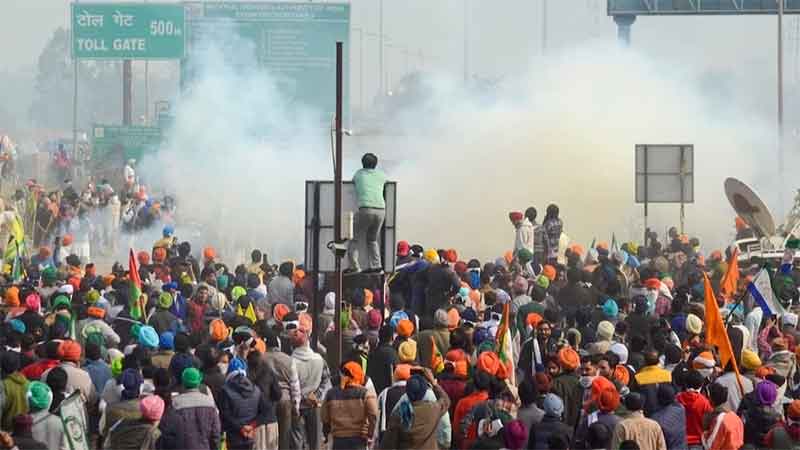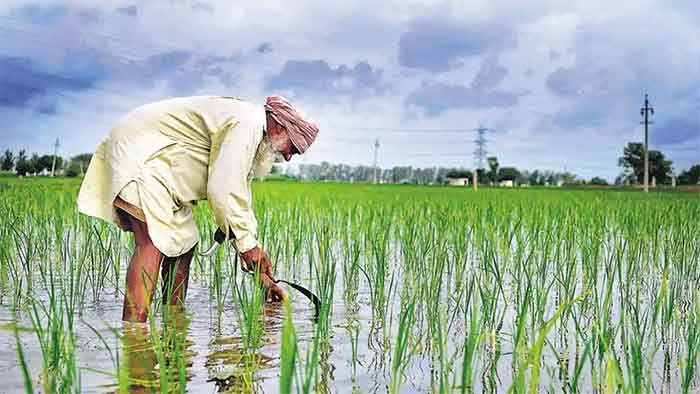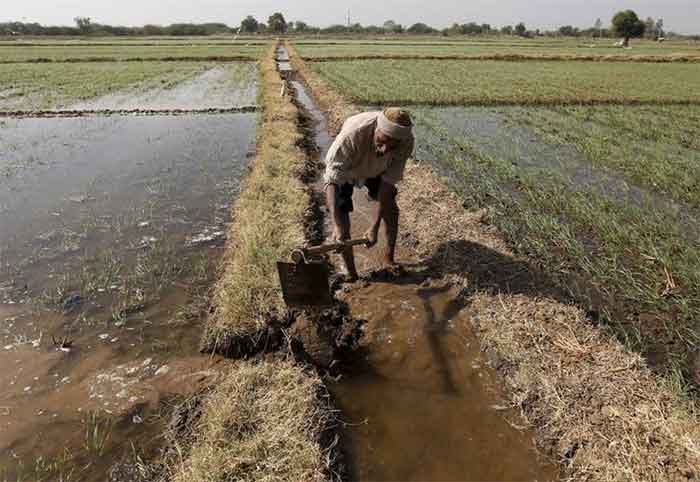
An organization working on the environment explored the plight of women farmers in India on the occasion of the Farmers’ Movement. This statistical investigation has revealed a lot of shocking information about women farmers. The number of women farmers in the country is steadily declining, while the number of women laborers is increasing. According to the 2011 census, there are 9.59 crore farmers in India. There are 7.39 crore males and 2.28 crore females. At the same time, a total of 8.61 crore workers work in the fields in the country. There are 5.52 crore males and 3.09 crore females. In addition, a total of 80.95 lakh people are involved in occupations like horticulture, animal husbandry, fisheries. This includes 2.5 million women.
If you look at the number of women laborers in agriculture, very shocking information comes to light. Girls between the ages of 5 and 9 also work as agricultural laborers. According to the 2011 census, there are 120,701 female agricultural laborers in the country. In terms of numbers, most women between the ages of 40 and 49 work as farm laborers. Their number is 62.64 lakh. This is followed by 40.89 lakh women in the age group of 35-39 years, 39.54 lakh women in the age group of 25-29 years, 38.67 lakh women in the age group of 30-34 years and 37.18 lakh women in the age group of 50-39 years. This is followed by 34.62 lakhs in the age group of 20 to 24 years, 22.31 lakhs in the age group of 60 to 69 years, 20.31 lakhs in the age group of 15 to 19 years, 4.95 lakhs in the age group of 70 to 79 years, 4.55 lakhs in the age group of 10 to 14 years and 4.55 lakhs. And the number of women agricultural laborers above 80 years is 1.21. This statistic of women farm laborers is shocking. Still, we talk about ‘save daughter, teach daughter’ or ‘women empowerment’.
According to the 2001 census, there were 10.36 crore farmers in the country. Of these, 7.82 crore were males and 2.53 crore were females. At the same time, the number of agricultural laborers was 634 crore. It was attended by 4.11 crore men and 2.23 crore women. If we compare the statistics, the total number of agricultural laborers has increased from 2001 to 2011 and the number of agricultural laborers in the country has increased to 2,26,71,592 during the two censuses.
As for women agricultural laborers, it was 2.23 crore in 2001 and increased to 3.09 crore in 2011. In other words, the number of women agricultural laborers has increased by 85.34 lakh between 2001 and 2011.
According to the 2011 census, the number of women farmers has decreased from 2001 to 2011 and the number of women agricultural laborers has increased. In 2001, the number of women farmers was 2.33 crore, but in 2011 it decreased to 2.28 crore. This means that about 25 lakh women farmers have left agriculture. Either of these women became laborers in the fields or went to do some other kind of work. Apart from this, the total number of farmers in the country is also declining. Between 2001 and 2011, India lost 76.83 lakh farmers.
In these 10 years, the number of male farmers has decreased by 51.91 lakh and the number of male agricultural laborers has increased by 1.41 crore. According to experts, there is a close relationship between the declining number of farmers and the increasing number of agricultural laborers. Land under cultivation is declining. India owns a total of 1,457 lakh agricultural lands. According to the Agriculture Ownership Act, according to the 2015-16 census, 13.96 per cent women own agricultural land. In 2010-11, it was 12.79 per cent. Out of the total agricultural land, 11.72 lakh women farmers were working in direct farming.
The average small, medium and large female farmer in India has less than one hectare of land. Women have ownership of less than one hectare of land. Only 1.58 crore hectares of agricultural land in the country is owned by women farmers. More than 73% of women workers in rural India work in agriculture. Only 5.43 lakh women farmers have 7.5 hectares to 10 hectares of agricultural land.
Scheduled Caste women farmers have an average of 0.68 hectares of agricultural land. At the same time, the situation of women farmers of Scheduled Tribes is a bit better. ST women have an average of 1.23 hectares of land. According to the Agricultural Census 2015-16, there are 30.99 lakh women farmers in the country and they have one to two hectares of agricultural land. According to the Hindu Inheritance Bill, 1956, after the death of a person, his land will be divided equally between the widow, the child and the mother of the deceased. The same law applies to Sikhism, Buddhism and Jainism. At the same time, according to Muslim personal law, a quarter of a widow is considered a shareholder in property, but it is declining due to social practices. Women should have an equal share in property, but Indian society is depriving them of this right.
According to a survey by Oxfam India (2018 Sun of the Soil), only 8% of women are entitled to agricultural income. This means that men are entitled to 92% of the income from agriculture and women are entitled to 73% of the income.
According to government records, women are not referred to as farmers. Only 13% of women own agricultural land. And that is why 87% of women cannot get the benefit of agricultural loans and grants from the government. Considering this problem, in 2011 the nominated member of Rajya Sabha M.S. Swaminathan (2007-13) introduced the Women Farmers’ Rights Bill 2011 in Parliament. The bill was introduced in the Rajya Sabha on May 11, 2012, but was repealed in April 2013. The bill discussed the rights and responsibilities of women farmers. Things like the definition of women farmers have also been included in the bill. According to Section 2F of the Bill, all women who live in rural areas and engage in agricultural activities – although sometimes they engage in non-agricultural activities – are all women farmers. It was also a matter of issuing certificates to women farmers and recognizing them as evidence.
Accordingly, after the approval of the Gram Sabha, the Gram Panchayat should issue such certificates to the women farmers to prove that they are connected with women farming. In November 2018, about 10,000 women farmers had called for ‘Delhi Chalo’ to bring in the ‘Women Farmers’ Rights Bill’, but the government did not pay special attention to their demands. The ‘Kisan Mukti March’ was organized by the All India Kisan Sangharsh Coordinating Committee. More than 200 farmers’ organizations participated in it. The main demands of the women farmers’ front were almost the same as Swaminathan had mentioned in his bill. In 2018, a morcha was launched under the name ‘Vidhan Sabha from Vidhan Sabha’ to eliminate gender-based discrimination in agriculture. It was part of the ARO campaign launched by the Gorakhpur Environmental Action Group (GEAG) in March 2006. The main objective of this campaign is to empower those who are really contributing to agriculture.
It is estimated that 52 to 75 per cent of women working in agriculture are uneducated and poorly educated. They have no awareness. So most of the women work in the fields for no pay. In agriculture, the wages of male farmers are more than a quarter of those of female workers. Out of the total agricultural sector in the world, rural women are involved in 50% of the agricultural sector. Due to the role of women in agriculture, ‘Mahila-Kisan Din’ is celebrated on 1st October every year. According to the Food and Agriculture Organization, the share of women in Indian agriculture is about 32 per cent. 48% women are involved in agricultural employment, while 7.5 crore women are engaged in milk production and livestock management.
According to FAO figures, women in rural areas work 3,485 hours per hectare every year. In comparison, men work only 1,212 hours. According to the National Sample Survey Organization (NSSO), 50 per cent of rural women work in agriculture, horticulture, forestry and fisheries in 23 states. The percentage is 50 per cent in Bengal, Tamil Nadu, Punjab and Kerala, while it is 70 per cent in Bihar, Madhya Pradesh and Chhattisgarh. The same proportion is 10 per cent in the northeastern states.
Vikas Parasram Meshram works in the development sector
















































